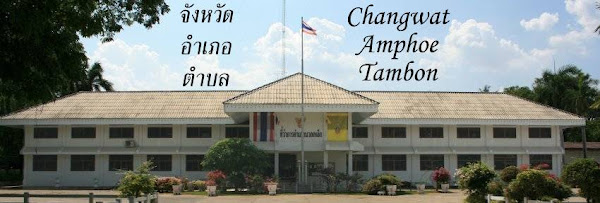The book
The Provincial Administration of Siam 1892-1915 by Tej Bunnag contains a map in the preface which shows "Siam in 1915". I mentioned it shortly already when I wrote about the
monthon abolished in 1932.
As I considered (and still do) the book very authoritative, I also took this map at face value and thus supposed that the boundaries it shows are correct. The differences between the current boundaries and the ones in the book are only the provinces Amnat Charoen, Sa Kaeo and Nong Bua Lamphu created in 1993, Phayao created in 1977 and Yasothon created in 1972. Also Thonburi and Phra Nakhon are show as separate province, as they were merged in Bangkok metropolis in 1971. In the appendix the book lists the provinces of each monthon at the creation of the monthon, thus including provinces like Takua Pa or Lang Suan. As these weren't present in this map I thus thought they must have been abolished in before 1915.
So it was quite a surprise when I discovered the Royal Gazette announcement on the abolishment of monthon and provinces in 1933, and found it include all those provinces which existed at the establishment of the monthon, but were all lacking in this map. I already posted a complete
list of provincial changes till 1910 here. In fact, the map not only lacks these provinces, it also lacks provincial boundary changes by reassignments of districts from one province to another. The most notable - because it's the largest district of all - is Umphang, which in 1915 still belonged to Kamphaeng Phet, but in this map its easy to see belonging to Tak.
So, in fact this map is in fact very misleading, it seems it was much less carefully researched than the other parts of the work. In fact simply shows the provincial layout of 1968 (the year the dissertation was written) with the
monthon superimposed, but definitely not "Siam in 1915".




